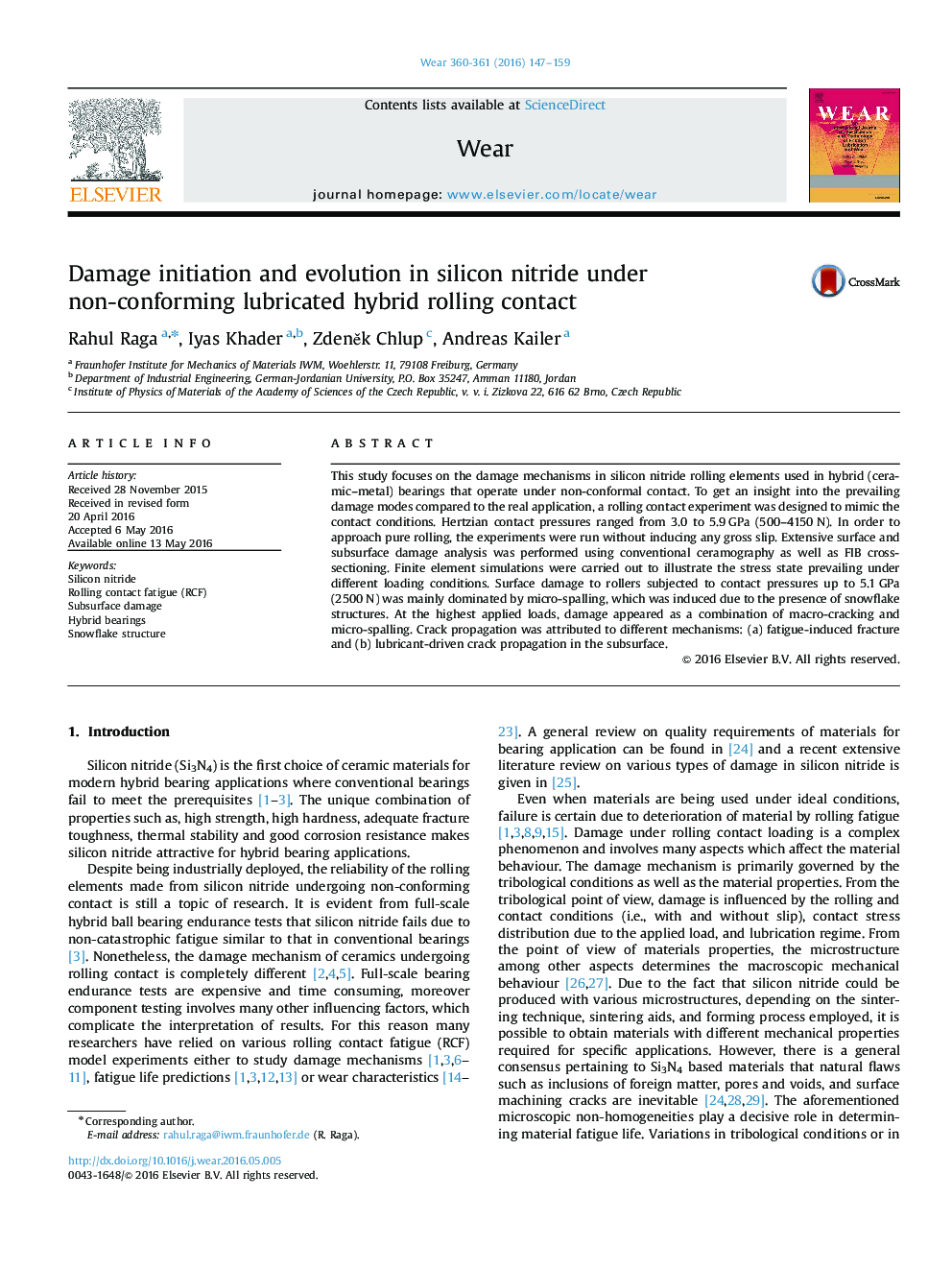| Article ID | Journal | Published Year | Pages | File Type |
|---|---|---|---|---|
| 616886 | Wear | 2016 | 13 Pages |
Abstract
This study focuses on the damage mechanisms in silicon nitride rolling elements used in hybrid (ceramic-metal) bearings that operate under non-conformal contact. To get an insight into the prevailing damage modes compared to the real application, a rolling contact experiment was designed to mimic the contact conditions. Hertzian contact pressures ranged from 3.0 to 5.9Â GPa (500-4150Â N). In order to approach pure rolling, the experiments were run without inducing any gross slip. Extensive surface and subsurface damage analysis was performed using conventional ceramography as well as FIB cross-sectioning. Finite element simulations were carried out to illustrate the stress state prevailing under different loading conditions. Surface damage to rollers subjected to contact pressures up to 5.1Â GPa (2500Â N) was mainly dominated by micro-spalling, which was induced due to the presence of snowflake structures. At the highest applied loads, damage appeared as a combination of macro-cracking and micro-spalling. Crack propagation was attributed to different mechanisms: (a) fatigue-induced fracture and (b) lubricant-driven crack propagation in the subsurface.
Related Topics
Physical Sciences and Engineering
Chemical Engineering
Colloid and Surface Chemistry
Authors
Rahul Raga, Iyas Khader, ZdenÄk Chlup, Andreas Kailer,
